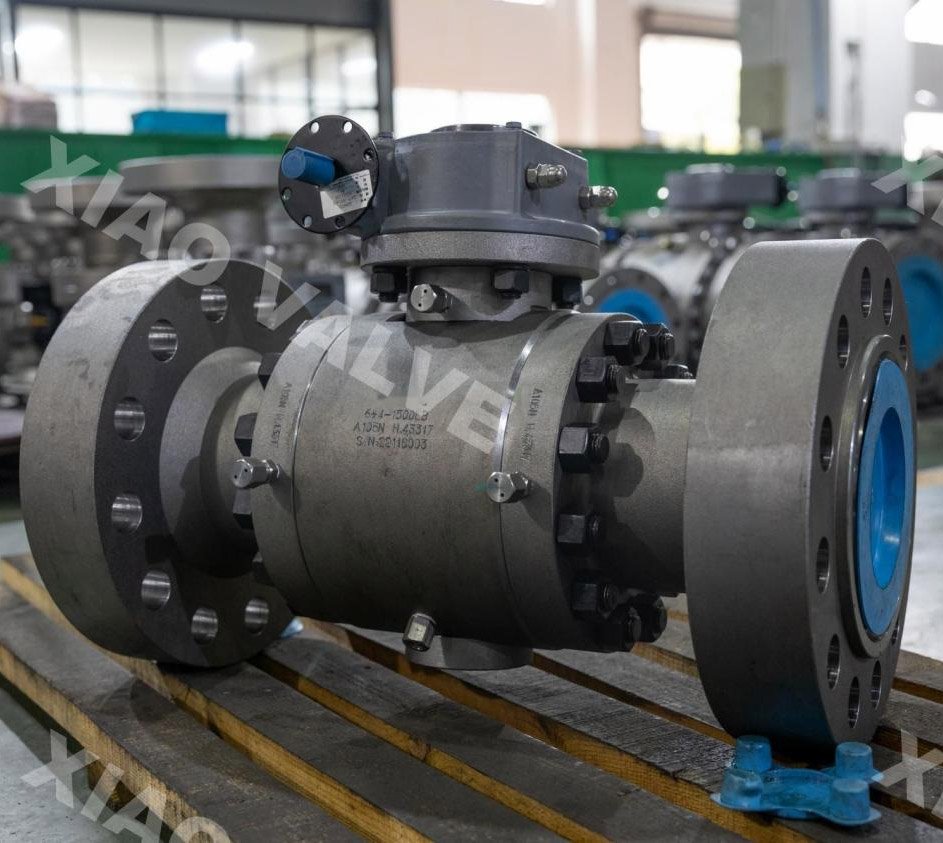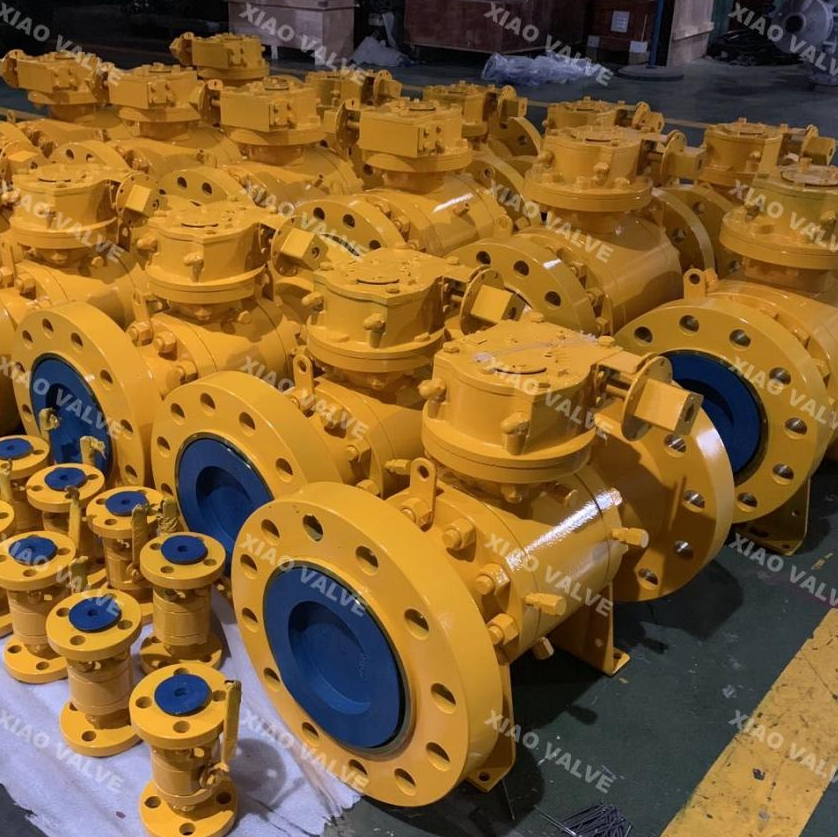A trunnion ball valve is a crucial component used in various industries to control the flow of liquids and gases through a pipeline. Imagine it like a gate that you can open or close to allow or stop the flow of water. Unlike a simple faucet, a trunnion ball valve can handle high pressures and large volumes of fluids. It’s designed to be robust and efficient, making it an essential tool in industrial settings. In this article, we’ll explain in detail the question answer what is a trunnion ball valve.
Parts of a Trunnion Ball Valve
Understanding the pieces of a trunnion ball valve assists us with perceiving how it functions. Here are the primary parts:
- Body: This is the external shell that keeps the wide range of various parts intact. It’s generally made areas of strength for of like steel or hardened steel to endure high tension and cruel circumstances.
- Ball: Inside the valve is a circular ball with an opening bored through the center. This ball turns to either permit the liquid to go through or block it.
- Trunnion: The trunnion is a shaft that holds the ball set up from the base. It offers additional help, particularly for huge valves, assisting with balancing out the ball during activity.
- Seats: These are rings that fit firmly against the ball. At the point when the ball goes to obstruct the stream, the seats make a tight seal around it to forestall any spillage.
- Stem: The stem is associated with the ball and reaches out to the beyond the valve. It sends the movement from the handle or actuator to the ball.
- Actuator or Handle: This part is used to turn the valve. It very well may be a straightforward manual handle or a more complicated mechanized actuator for remote or robotized control.
- Seals and Gaskets: These are set at different focuses to guarantee there are no holes in the valve. They are vital for keeping up with the trustworthiness of the valve under high tension.

How Do Trunnion Ball Valves Work?
The functioning guideline of trunnion ball valves is direct however clever.
Stream Control: The key component is the ball inside the valve, which has an opening through the middle. At the point when this opening lines up with the pipeline, liquids can course through it. At the point when the ball is turned so the opening is opposite to the stream, it stops the liquid.
Activity: To work the valve, you turn the handle or actuator associated with the stem. The stem pivots the ball inside the valve body.
Support and Stability: The trunnion, which upholds the ball from the base, guarantees that the ball stays stable and turns without a hitch. This is particularly significant in huge valves where the ball could somehow or another wobble or shift because of the weight and tension.
Fixing: The seats press against the ball to make a tight seal. This keeps any liquid from spilling when the valve is in the shut position. The seals and gaskets further guarantee that there are no breaks from the valve body itself.
Convenience: Trunnion ball valves require less power to work contrasted with different kinds of valves. This is because the trunnion assimilates a significant part of the tension from the stream, making it more straightforward to turn the ball considerably under high-tension circumstances.

Pros of trunnion ball valve
- Solidness: Trunnion ball valves are dependable. The vigorous materials used in their development make them sturdy and solid, significantly under outrageous circumstances.
- Leak Prevention: The plan of the valve, especially the seats and seals, guarantees a tight shutoff, forestalling releases even at high tensions.
- Low Working Force: These valves are not difficult to work. The trunnion support lessens the contact and power expected to turn the ball, making them easy to use.
- Reasonable for High Strain: Trunnion ball valves can deal with high-pressure conditions productively. The trunnion support circulates the tension, decreasing the burden of ready and different parts.
- Flexible: These valves are adaptable and can be used for various liquids and gases, it is destructive or grating to incorporate those.
Cons of trunnion ball valve
- Cost: Trunnion ball valves can be more costly compared with different kinds of valves. Their intricate plan and the top-notch materials required add to the greater expense.
- Size and Weight: They are frequently bigger and heavier, which can be a disadvantage in applications where space and weight are basic elements.
- Support: While they are sturdy, they truly do require ordinary upkeep to guarantee ideal execution. This can include checking and supplanting seals and gaskets occasionally.
Applications of Trunnion Ball Valves
- Oil and Gas Industry: In this industry, controlling the progression of oil and gas is essential. Trunnion ball valves are used in pipelines, processing plants, and boring tasks to deal with the stream and guarantee wellbeing.
- Synthetic Plants: Compound plants manage different liquids, some of which are destructive or poisonous. Trunnion ball valves, with their powerful plan and amazing fixing, help in securely controlling these liquids.
- Water Treatment Plants: These plants need to precisely control the progression of water and other treatment synthetic substances. Trunnion ball valves are used to guarantee exact control and forestall spills.
- Power Plants: Power plants frequently work with high-pressure steam and different liquids. Trunnion ball valves help in dealing with these high-pressure streams proficiently, adding to the protected and compelling activity of the plant.
- Drugs: In drug ventures, controlling the progression of different fluids and gases is fundamental for assembling processes. Trunnion ball valves give important control and dependability.
Final Words
Trunnion ball valves are an imperative part of numerous enterprises. Their capacity to control the progression of fluids and gases with accuracy and unwavering quality makes them key. The different parts, including the body, ball, trunnion, seats, and seals, cooperate to guarantee proficient activity.
https://www.xiaovalve.com/what-is-a-trunnion-ball-valve/
